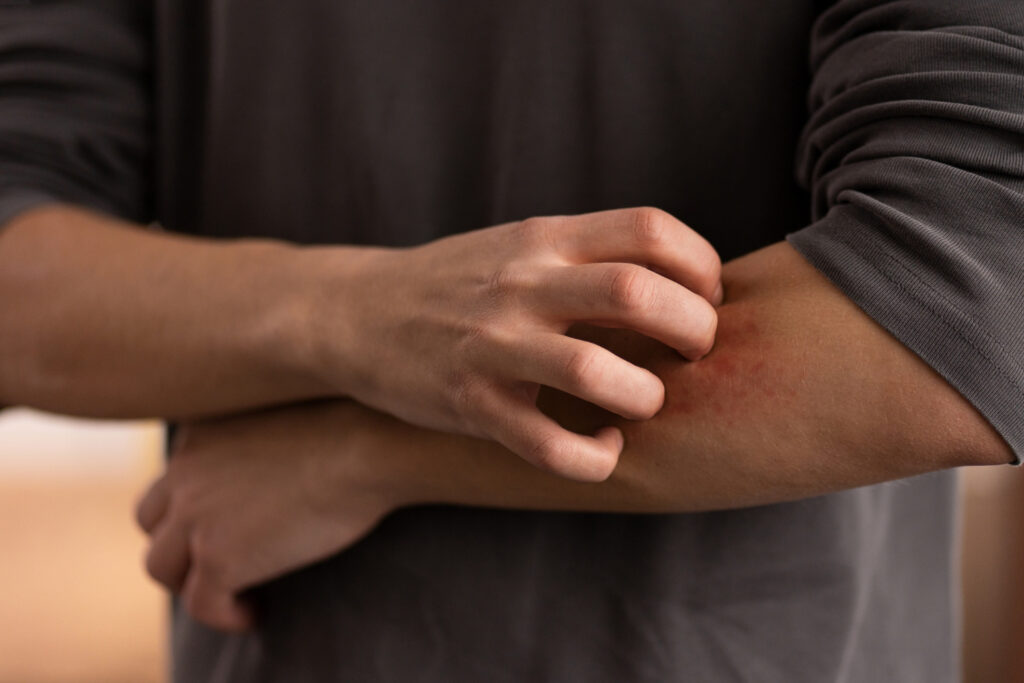
In this article
Leprosy, also known as Hansen’s disease, is an ancient infectious condition that remains present today. However, with early detection and treatment, it is curable. The treatment primarily involves multidrug therapy with antibiotics.
What is Leprosy?
Leprosy, or Hansen’s disease, is an infectious disease caused by the bacterium Mycobacterium leprae (my-co-bak-TEER-ee-um LEP-pray). It affects the eyes, skin, mucous membranes, and nerves, leading to disfiguring sores and nerve damage. Historically, those affected by leprosy were isolated due to misunderstandings about the disease. Today, effective treatments are available, and isolation is no longer necessary.
Does Leprosy Still Exist?
Yes, leprosy still exists, though it is rare. According to the World Health Organization, approximately 208,000 people worldwide are diagnosed with leprosy each year, with most cases in Asia and Africa. In the United States, around 100 people are diagnosed annually.
Who Does Leprosy Affect?
Leprosy can affect people of all ages but is most common in individuals aged 5 to 15 or over 30. Research indicates that over 95% of people infected with Mycobacterium leprae do not develop leprosy due to their immune system’s ability to fight off the infection.
Types of Leprosy
There are three main types of leprosy:
- Tuberculoid Leprosy: Characterized by mild symptoms and a few sores due to a strong immune response. Also known as paucibacillary leprosy.
- Lepromatous Leprosy: Marked by widespread sores and lesions affecting nerves, skin, and organs due to a poor immune response. It is more contagious and is called multibacillary leprosy.
- Borderline Leprosy: Displays symptoms of both tuberculoid and lepromatous leprosy. Also referred to as dimorphous leprosy.
Symptoms and Causes
Main Symptoms of Leprosy
The three main symptoms of leprosy include:
- Skin patches that may be red or have lost pigmentation.
- Skin patches with diminished or absent sensations.
- Numbness or tingling in the hands, feet, arms, and legs.
symptoms may include:
- Painless wounds or burns on the hands and feet.
- Muscle weakness.
- Thick or stiff skin.
- Enlarged peripheral nerves.
- Loss of eyelashes or eyebrows.
- Nasal congestion and nosebleeds.
In advanced stages, leprosy can cause:
- Paralysis.
- Vision loss.
- Disfigurement of the nose.
- Permanent damage to the hands and feet.
- Shortening of the fingers and toes.
- Chronic ulcers on the feet that don’t heal.
Symptoms of leprosy typically appear three to five years after infection, though it can take up to two decades.
Cause of Leprosy
Leprosy is caused by coming into close contact with the bacterium Mycobacterium leprae.
Is Leprosy Contagious?
Leprosy is not highly contagious. It is believed to spread through airborne droplets when an infected person coughs or sneezes. Most people have a natural immunity to the bacterium, with only about 5% of people being susceptible to developing the disease.
Do Armadillos Carry Leprosy?
Yes, some armadillos can carry Mycobacterium leprae and spread it to humans. This species is found in the southern United States and Mexico.
Diagnosis and Tests
How is Leprosy Diagnosed?
Healthcare providers diagnose leprosy through a skin biopsy, where a small tissue sample is analyzed in a lab.
Management and Treatment
Is There a Cure for Leprosy?
Yes, leprosy is curable with modern medicine and antibiotics. Over the past 20 years, more than 16 million people have been cured.
How is Leprosy Treated?
Leprosy is treated with multidrug therapy (MDT), which combines different antibiotics to prevent resistance. Common antibiotics include dapsone, rifampin, and clofazimine. Anti-inflammatory drugs, such as steroids, may also be prescribed to manage nerve pain.
Recovery Time
Leprosy treatment typically takes one to two years, during which healthcare providers will monitor progress.
Prevention
How to Prevent Leprosy
To reduce the risk of leprosy, avoid contact with airborne droplets from the nose or mouth of an infected person. However, the risk of contracting leprosy is generally very low.
Outlook / Prognosis
What to Expect if Diagnosed with Leprosy
Prompt treatment with antibiotics can minimize symptoms and improve the quality of life. Healthcare providers will tailor the antibiotic regimen and monitor the patient’s progress over the treatment period.
Living With Leprosy
When to See a Healthcare Provider
Seek medical advice if you develop skin sores, numbness, or muscle weakness to determine if leprosy or another condition is the cause
summary
Leprosy, once a mysterious and feared disease, is now understood to be curable. If you suspect you have leprosy, consult a healthcare provider promptly to begin treatment and improve your quality of life











